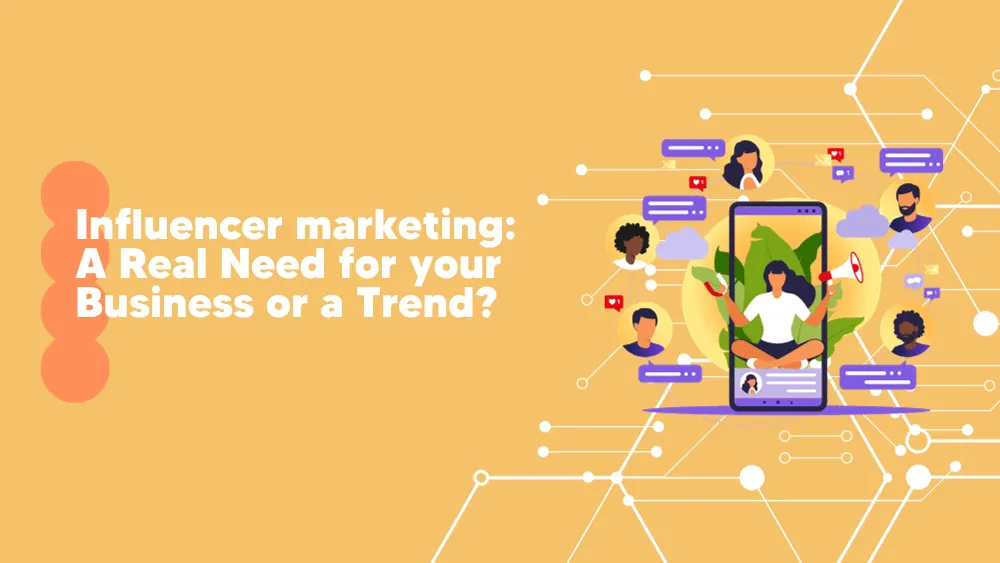We know that neuromarketing is a field still in development, where neuroscience meets marketing – the closest marketers have ever gotten to reading minds. But what is neuromarketing really? How does it work? This discipline involves using neuroscientific methods to understand, as well as influence consumer behavior. By analyzing how the brain responds to marketing stimuli, it provides insights into the subconscious preferences and decisions of consumers.
Historical Evolution of Neuromarketing Research
In the quest to understand what is neuromarketing, its history plays an important role. The journey of neuromarketing began in the early 2000s. The term itself was first popularized in 2002 by Ale Smidts, a professor of marketing research. However, the roots of this field trace back to the 1990s with the advent of functional magnetic resonance imaging (fMRI). This technology allowed scientists to observe brain activity in real-time, paving the way for more sophisticated market research.
One of the pioneering studies in neuromarketing was conducted in 2004 by Read Montague, who used fMRI to study consumers’ preferences for Pepsi and Coca-Cola. This study showcased the power of neuromarketing in uncovering the hidden influences behind brand preferences.
Importance and Relevance in Modern Marketing Strategies
In a world where traditional marketing methods are often met with skepticism, neuromarketing’s role is to offer a more authentic understanding of consumer behavior. Decoding consumer behavior through brain science helps marketers create more effective and personalized marketing strategies. By understanding the neurological responses to different stimuli, businesses can tailor their approaches to better align with the subconscious preferences of their target audience. This leads to more engaging and successful marketing campaigns, which are crucial in a competitive market landscape.
The Neuroscience Behind Consumer Behavior
Given the complexity of human brains and techniques developed over the years, it would be easy to change the whole article into quite a lengthy book. For those who find themselves intrigued and craving more, don’t worry – at the end of this article, you’ll find a list of interesting books, and resources that will go beyond satisfying your curiosity. In the meantime though, let’s consider why neuromarketing even works.
Brain Structures Involved
The Amygdala – Emotions and Brand Perception
- What It Does: This little almond-shaped structure is our emotional powerhouse. It’s the reason you might feel happy when you see kittens or a bit anxious when watching a suspenseful movie. As such, it plays an important role in processing emotions, which are fundamental in shaping consumer preferences and attitudes.
- Neuromarketing: It helps marketers understand emotional reactions to their products or brands. For instance, if an advertisement triggers positive emotions in the amygdala, consumers are more likely to have a favorable perception of that brand. This emotional response can be more influential in driving purchasing decisions than the actual product features.
The Prefrontal Cortex: Rational Decisions and Value Assessment
- What It Does: It’s the brain’s rational decision-maker. It’s where you weigh the pros and cons of a decision, like whether to have salad or pizza for dinner.
- In Neuromarketing: This area is crucial for marketers to understand how consumers evaluate the practicality and value of their products. It’s responsible for balancing emotional impulses from the amygdala with logical reasoning. If a product is perceived as valuable and meets the rational criteria set by the prefrontal cortex, consumers are more likely to make a purchase.
The Nucleus Accumbens: Pleasure and Reward
- What It Does: This is the brain’s reward center. It lights up when you’re anticipating something enjoyable, like hugging cute kittens, the taste of your favorite ice cream, or the thrill of reading an article on neuromarketing.
- In Neuromarketing: It’s triggered by the anticipation of pleasure associated with a product. When marketing taps into this area effectively, it can create a strong desire for a product. This is why seeing an ad for a delicious burger can suddenly make you crave it, even if you weren’t hungry before.
The Hippocampus: Memory and Brand Connection
- What It Does: The hippocampus is your memory powerhouse. It’s the part of the brain that helps you remember your first day of school or your best friend’s birthday.
- In Neuromarketing: It links emotions (processed by the amygdala) to memories. This is vital for brand recall and loyalty. For example, if a consumer has a positive experience with a brand, the hippocampus helps to embed this experience in their memory, increasing the likelihood of future purchases and long-term brand loyalty.
Role of Emotions and Memory in Decision-Making
Emotions, primarily processed in the amygdala, are at the forefront of decision-making, often leading to impulse purchases. The joy or excitement evoked by an advertisement, for example, can compel a person to buy a product spontaneously. Marketers harness this by creating emotionally charged campaigns that foster a strong positive association with their products or brands, thus influencing purchasing decisions.
Memory, especially its formation in the hippocampus, is equally crucial in decision-making. Positive interactions with a brand create memories that influence future purchasing decisions. This is the essence of brand loyalty: a good experience today can lead to repeat business tomorrow. Effective marketing strategies, therefore, focus on creating memorable experiences through unique advertising, exceptional customer service, or standout products.
Neurological Triggers in Purchasing Decisions
Sensory stimuli like striking visuals, soothing music, or enticing scents activate various brain areas, including the nucleus accumbens, creating an immediate emotional response and often leading to a quick decision to purchase. Marketers use sensory marketing to enhance the appeal of a product, increasing the likelihood of purchase. For instance, the smell of fresh coffee in a café or visually appealing packaging can significantly boost a product’s attractiveness.
Social proof also plays a significant role in decision-making. Humans are inherently social, and the brain responds to social cues. Seeing others enjoy a product can trigger a desire to experience the same. Customer testimonials, reviews, or showcasing popular items are effective ways to leverage social proof in marketing, capitalizing on the idea that if others are satisfied with a purchase, the product is likely worthwhile.
Lastly, the concepts of scarcity and urgency tap into the brain’s response mechanisms. The fear of missing out (FOMO) can trigger a quick decision to purchase. Marketing campaigns that create a sense of scarcity (like limited-time offers) or urgency (such as countdown timers) effectively drive purchases by playing on the brain’s natural aversion to loss.
Ethical Considerations in Neuromarketing
Mentioning marketing and neuroscience in one sentence calls for discussion on the ethics of such a solution. Understanding consumer behavior through brain science to sell them a product brings about questions of privacy, manipulation, and the need for regulation.
-
Privacy Concerns and Brain Data Collection
Unlike traditional marketing data, brain data can reveal deeply personal information about an individual’s preferences, biases, and even vulnerabilities. This raises questions about how this data is collected, stored, and used. There’s a fine line between gathering insightful marketing data and infringing on individual privacy. Ensuring transparency in data collection processes and giving consumers control over their data are essential steps in addressing these privacy concerns.
-
Manipulation vs. Ethical Persuasion
Another ethical aspect of neuromarketing is the fine line between manipulation and ethical persuasion. While neuromarketing’s role is to influence consumer behavior, it has the potential to do so by tapping into subconscious processes. This raises the question: at what point does persuasion become manipulation? Ethical neuromarketing should aim to inform and engage consumers rather than exploit their subconscious vulnerabilities. It’s about creating value and positive experiences, not taking advantage of the consumer’s neural responses for profit.
-
Regulatory Measures and Guidelines
Given these ethical concerns, the need for regulatory measures and guidelines in neuromarketing is evident. There’s a growing call for the development of standards and regulations to guide the ethical use of neuromarketing techniques. This includes guidelines on how brain data should be collected, analyzed, and used, ensuring that it is done responsibly and ethically. Regulatory measures could also help in distinguishing between ethical persuasion and manipulative tactics, safeguarding consumer interests while allowing marketers to harness the insights offered by neuromarketing ethically.
Neuromarketing in Digital Marketing
Let’s break down how neuromarketing principles are applied in various aspects of digital marketing:
Website Optimization Using Neuromarketing Principles
- Design for Emotional Appeal: Incorporating elements that cause positive emotions, such as appealing colors and engaging images (e.g kittens), can enhance user experience and engagement.
- Ease of Navigation: Utilizing layout and design that align with natural eye movement patterns, as revealed by eye-tracking studies, to make websites more intuitive and user-friendly.
- Persuasive Content: Crafting content that resonates with the target audience by tapping into their desires and pain points, as understood through neuromarketing insights.
Crafting Compelling Advertisements Based on Cognitive Responses
- Emotional Resonance: Creating ads that connect emotionally with viewers, using insights about how different stimuli affect the amygdala.
- Attention-Grabbing Elements: Employing visuals, sounds, or narratives that are known to capture attention, based on an understanding of how the brain processes sensory information.
- Subconscious Influences: Subtly incorporating elements that influence the subconscious, like certain colors or words that have been shown to trigger specific brain responses.
Analyzing Social Media Engagement Through Neuroscientific Methods
- Reaction to Content: Analyzing how different types of content (images, videos, text) engage the brain, using methods like EEG or eye-tracking, to form social media strategies.
- Emotional Analytics: Using sentiment analysis tools to gauge emotional responses to social media posts and adjust content accordingly.
- Engagement Patterns: Studying engagement patterns, like likes and shares, with the type of content, to understand what drives user interaction on a neurological level.
The Future of Neuromarketing
The future of neuromarketing is unfolding at the intersection of current innovations and forward-looking projections. Advancements in neurotechnology, such as EEG and fMRI, are already being employed to decipher consumer reactions. This trend is expected to advance, offering even more precise insights into consumer behavior.
Simultaneously, the integration of neuromarketing with traditional research methods is enhancing our understanding of consumer responses. This approach is not just theoretical; it’s being actively applied in areas like predicting market trends based on small sample neuromarketing measures, demonstrating the practical application of these insights in real-world scenarios.
The role of AI in neuromarketing is particularly notable. Companies like Coca-Cola and Amazon are already harnessing AI to analyze consumer behavior and personalize marketing efforts. This integration is set to deepen, with AI becoming increasingly adept at analyzing and predicting consumer preferences. However, this progression also brings to the forefront the need for ethical considerations, emphasizing the importance of transparent data usage and consumer privacy.
In essence, the future of neuromarketing lies in the continued and expanded use of current technologies and methodologies. The ongoing development and application of both neurotechnology and AI in understanding consumer behavior are paving the way for more personalized, efficient, and ethically conscious marketing strategies. As these technologies evolve, they are going to revolutionize the landscape of consumer marketing, offering unprecedented insights into the human mind and behavior.
Final Thoughts
In conclusion, neuromarketing represents a pioneering frontier where neuroscience and marketing converge, offering an unprecedented window into consumer behavior. As we’ve explored, from its historical roots to the intricate workings of the brain, and the ethical considerations it necessitates, neuromarketing is reshaping how marketers understand and engage with their audience.
The integration with AI and digital marketing heralds a future of more personalized, effective, and ethically conscious marketing strategies. For those intrigued by this fusion of brain science and marketing, the journey has just begun. Stay curious, and explore further!








